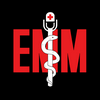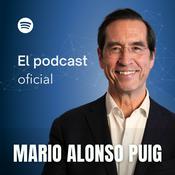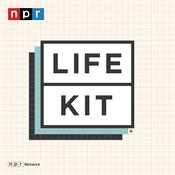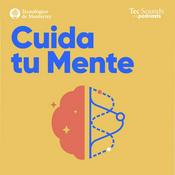1135 episodios

Episode 987: Cough Suppressants
15/12/2025 | 7 min
Contributor: Meghan Hurley, MD Educational Pearls: OTC Medications Dextromethorphan (DM) Most common OTC cough suppressant Minimal efficacy: Little evidence that it shortens the duration or severity of cough. Potential side effects: At recommended doses: Mild dizziness, drowsiness, GI symptoms Higher doses: Decreased consciousness, dissociative effects Guaifenesin Found in Mucinex and other severe cough/cold products Thins secretions and loosens mucus in airways No more effective than increasing oral fluid intake Prescription Medications Codeine-containing products Suppresses cough center in the medulla Metabolized via CYP2D6 with significant differences in metabolism between individuals: Low metabolizers experience little effect, high metabolizers have risk of increased toxicity Benzonatate (Tessalon Perles) Topical anesthetic; inhibits pulmonary stretch receptors and reduces cough reflex. Efficacy is mixed; no clear benefit over placebo. Precautions: do not bite or chew; dangerous in children Inhaled/Nebulized Lidocaine Used for chronic or refractory cough (patients with lung cancer, COPD) Side effects: bitter taste, perioral numbness Precautions: Keep patient NPO with continuous monitoring due to aspiration risk Improvement usually within a few hours; duration of effect unclear Children Over 1 Year Many children's OTC cough products are naturopathic and not FDA-approved. Other remedies: Honey (only age >1 year; risk of botulism in infants), Vicks VapoRub on chest, thyme/honey/lemon tea mixture Prolonged Cough Cough >2 weeks or post-tussive emesis → consider pertussis. Tdap immunity wanes over time; risk increases if Tdap is not received routinely. If pertussis is suspected, consider trial of a macrolide antibiotic. References Chong CF, Chen CC, Ma HP, Wu YC, Chen YC, Wang TL. Comparison of lidocaine and bronchodilator inhalation treatments for cough suppression in patients with chronic obstructive pulmonary disease. Emerg Med J. 2005 Jun;22(6):429-32. doi: 10.1136/emj.2004.015719. PMID: 15911951; PMCID: PMC1726806. Havers FP, Moro PL, Hunter P, Hariri S, Bernstein H. Use of Tetanus Toxoid, Reduced Diphtheria Toxoid, and Acellular Pertussis Vaccines: Updated Recommendations of the Lam SHF, Homme J, Avarello J, Heins A, Pauze D, Mace S, Dietrich A, Stoner M, Chumpitazi CE, Saidinejad M. Use of antitussive medications in acute cough in young children. J Am Coll Emerg Physicians Open. 2021 Jun 18;2(3):e12467. doi: 10.1002/emp2.12467. PMID: 34179887; PMCID: PMC8212563. Malesker MA, Callahan-Lyon P, Ireland B, Irwin RS; CHEST Expert Cough Panel. Pharmacologic and Nonpharmacologic Treatment for Acute Cough Associated With the Common Cold: CHEST Expert Panel Report. Chest. 2017 Nov;152(5):1021-1037. doi: 10.1016/j.chest.2017.08.009. Epub 2017 Aug 22. PMID: 28837801; PMCID: PMC6026258. Singu B, Verbeeck RK. Should Codeine Still be Considered a WHO Essential Medicine? J Pharm Pharm Sci. 2021;24:329-335. doi: 10.18433/jpps31639. PMID: 34192509. U.S. National Library of Medicine. Benzonatate capsule. DailyMed. Updated July 31, 2023. Accessed December 13, 2025. https://dailymed.nlm.nih.gov/dailymed/drugInfo.cfm?setid=c21afd18-3b04-4f15-874b-25e0c768f801 Summarized by Ashley Lyons, OMS3 | Edited by Ashley Lyons and Jorge Chalit, OMS4 Donate: https://emergencymedicalminute.org/donate/

Episode 986: Lateral Canthotomy in Emergency Settings
08/12/2025 | 4 min
Contributor: Taylor Lynch, MD Educational Pearls: What is orbital compartment syndrome, and how is it assessed in the emergency room? Orbital compartment syndrome (OCS) is an emergent ophthalmic condition in which intraorbital pressure in the orbital compartment rises dramatically, compromising perfusion of the optic nerve and retina, leading to risk of irreversible vision loss. OCS occurs in the context of traumatic lesions with retrobulbar hemorrhage. Intraocular pressures (IOP) are measured via tonometry as a surrogate for intraorbital pressures, with emergent pathology being present when IOP exceeds 30-40 mmHg (normal being around 20 mmHg). What might be some physical exam findings beyond increased IOP for orbital compartment syndrome? Proptosis (physical outward protrusion of eye) with resistance to being pushed posterior. Afferent pupillary defect (when the non-impacted eye has light shown into it, the impacted eye will have pupillary constriction, and when light is removed it will begin to dilate, but when light is shown into the impacted eye, it will not constrict and continue to dilate). Generalized complaints of vision loss or an inability to move the eye. What is the treatment for orbital compartment syndrome? Lateral canthotomy must be performed immediately upon clinical suspicion as permanent vision loss can occur within minutes to hours. Lateral canthotomy Step-by Step: Ideally have the patient sedated or highly cooperative. Numb and vasoconstrict the surrounding eye/orbital skin tissue with lidocaine and epinephrine. Take hemostats and clamp the interior and exterior eyelid at the lateral canthus at a 90º angle towards the orbital rim for 30-60 seconds to further devascularize the region. Take iris scissors and cut laterally to the orbital bone/rim to reveal the lateral lanthal tendon. Cut the inferior crus of the lateral lanthal tendon as this will provide the most significant reduction in IOP. Reassess IOP during each step of the procedure to measure procedure efficacy. If no pressure reduction is noted with inferior cantholysis, cutting the superior crus of the lateral canthal tendon may be required to further allow the eye to bulge out and reduce intraorbital pressure. Big takeaways? Ocular compartment syndrome is a rare but emergent vision threatening condition that requires immediate lateral canthotomy to reduce intraocular and intraorbital pressures. Lateral canthotomy done within 30-60 minutes of symptom development can save the patient from permanent vision loss. References: Mohammadi F, Rashan A, Psaltis A, et al. Intraocular Pressure Changes in Emergent Surgical Decompression of Orbital Compartment Syndrome. JAMA Otolaryngol Head Neck Surg. 2015;141(6):562-565. doi:10.1001/jamaoto.2015.0524 Haubner F, Jägle H, Nunes DP, et al. Orbital compartment: effects of emergent canthotomy and cantholysis. Eur Arch Otorhinolaryngol. 2015;272(2):479-483. doi:10.1007/s00405-014-3238-5 Bailey LA, van Brummen AJ, Ghergherehchi LM, Chuang AZ, Richani K, Phillips ME. Visual Outcomes of Patients With Retrobulbar Hemorrhage Undergoing Lateral Canthotomy and Cantholysis. Ophthalmic Plast Reconstr Surg. 2019;35(6):586-589. doi:10.1097/IOP.0000000000001401 Summarized by Dan Orbidan, OMS2 | Edited by Dan Orbidan and Jorge Chalit, OMS4 Donate: https://emergencymedicalminute.org/donate/

Episode 985: Amiodarone vs. Lidocaine
08/12/2025 | 2 min
Contributor: Aaron Lessen, MD Educational Pearls: How do amiodarone and lidocaine work on the heart? Amiodarone Blocks potassium channels (Class III effect). Also blocks sodium and calcium channels. Additional noncompetitive beta-blocker effects. Stabilizes cardiac tissue, slows heart rate, and suppresses both atrial and ventricular arrhythmias. Lidocaine Blocks fast sodium channels in ventricular tissue (Class Ib). Shortens the action potential in ventricular myocardium, especially in ischemic tissue. Suppresses abnormal automaticity in damaged/irritable myocardium. Which one should you pick for a patient in vtach/vfib cardiac arrest? The current guidelines recommend amiodarone for shock-refractory cases but this is based on randomized trials showing better arrhythmia termination and short-term outcomes, but not long-term survival benefits. Two recent studies suggest that lidocaine might actually be preferable. A 2023 paper published in Chest Performed a large retrospective cohort study for treating in-hospital VT/VF cardiac arrest. Among more than 14,000 patients, lidocaine was associated with higher rates of ROSC, 24-hour survival, survival to discharge, and favorable neurologic outcomes. These results held after adjusting for covariates and using propensity score methods. Overall, lidocaine outperformed amiodarone across all major clinical outcomes in this population. A 2025 paper published in Resuscitation Performed a target trial emulation in adults with out-of-hospital shockable cardiac arrest. After propensity score matching in more than 23,000 eligible cases, lidocaine was associated with higher odds of prehospital ROSC, fewer post-drug defibrillations, and greater survival to hospital discharge. These advantages were consistent across matched patient pairs. Dose for lidocaine is an initial 1-1.5 mg/kg IV bolus, followed by additional boluses of 0.5-0.75 mg/kg every 5-10 minutes up to a total of 3 mg/kg if needed. Dose for amiodarone is a 300 mg bolus followed by an additional 150 mg bolus if needed. References Al-Khatib SM, Stevenson WG, Ackerman MJ, Bryant WJ, Callans DJ, Curtis AB, Deal BJ, Dickfeld T, Field ME, Fonarow GC, Gillis AM, Granger CB, Hammill SC, Hlatky MA, Joglar JA, Kay GN, Matlock DD, Myerburg RJ, Page RL. 2017 AHA/ACC/HRS guideline for management of patients with ventricular arrhythmias and the prevention of sudden cardiac death: Executive summary: A Report of the American College of Cardiology/American Heart Association Task Force on Clinical Practice Guidelines and the Heart Rhythm Society. Heart Rhythm. 2018 Oct;15(10):e190-e252. doi: 10.1016/j.hrthm.2017.10.035. Epub 2017 Oct 30. Erratum in: Heart Rhythm. 2018 Nov;15(11):e278-e281. doi: 10.1016/j.hrthm.2018.09.026. PMID: 29097320. Smida T, Crowe R, Price BS, Scheidler J, Martin PS, Shukis M, Bardes J. A retrospective 'target trial emulation' comparing amiodarone and lidocaine for adult out-of-hospital cardiac arrest resuscitation. Resuscitation. 2025 Mar;208:110515. doi: 10.1016/j.resuscitation.2025.110515. Epub 2025 Jan 23. PMID: 39863130; PMCID: PMC11908894. Wagner D, Kronick SL, Nawer H, Cranford JA, Bradley SM, Neumar RW. Comparative Effectiveness of Amiodarone and Lidocaine for the Treatment of In-Hospital Cardiac Arrest. Chest. 2023 May;163(5):1109-1119. doi: 10.1016/j.chest.2022.10.024. Epub 2022 Nov 2. PMID: 36332663. Summarized by Jeffrey Olson, MS4 | Edited by Jeffrey Olson and Jorge Chalit, OMS4 Donate: https://emergencymedicalminute.org/donate/

Episode 984: Fish Hooks
24/11/2025 | 4 min
Contributor: Megan Hurley, MD Educational Pearls: Assess first: confirm the hook isn't near vital structures. Automatic subspecialty consult for eye involvement or proximity to carotid artery, radial artery, peritoneum, testicle, or urethra Barbed hook: cannot be pulled back through the entry without disengaging the barb Removal Techniques String-Pull: best for superficial, single-barbed hooks Depress shank and eye of hook to disengage barb and then pull string taut and jerk suddenly along the long axis Can only be used when the hook is in a body part that can be firmly secured so it won't move during the procedure Little or no anesthesia needed Push-Through & Snip: best choice when barb is near the skin surface Anesthetize first and advance the hook forward until the barb emerges. Cut off the barb and then back hook out Small exit wound, no sutures needed Needle Cover: for larger hooks that are superficial Anesthetize first and then slide an 18 or 20-gauge needle along the hook until the bevel covers the barb. Then back out the needle and hook together Cut-it-out: last resort Make an incision along the body of hook to barb and then remove hook Adjuncts: Hydrodissection with lidocaine along the tract can ease removal Post-Procedure Irrigate thoroughly and apply antibiotic ointment Routine prophylaxis not needed because complications are rare Consider prophylactic antibiotics if hook is deeply embedded in high-risk area or contaminated by fresh water or salt water References Aiello LP, Iwamoto M, Guyer DR. Penetrating ocular fish-hook injuries. Surgical management and long-term visual outcome. Ophthalmology. 1992 Jun;99(6):862-6. doi: 10.1016/s0161-6420(92)31881-0. PMID: 1630774. Malitz DI. Fish-hook injuries. Ophthalmology. 1993 Jan;100(1):3-4. doi: 10.1016/s0161-6420(93)31700-8. PMID: 8433823. Summarized by Meg Joyce, MS2 | Edited by Meg Joyce & Jorge Chalit, OMS4

Episode 983: Head-of-Bed Position in Large Vessel Occlusion Strokes
18/11/2025 | 2 min
Contributor: Aaron Lessen MD Educational Pearls: Recent prospective randomized clinical trial assessed optimal head-of-bed positioning in patients with LVO 0º vs. 30º elevation Objective was to determine superiority of the two angles in stability prior to thrombectomy for LVO patients 45 patients randomized to the group with 0° head positioning and 47 patients randomized to the group with 30° head positioning Patients in the 30º group experienced worsening of NIHSS by 2 points or more Patients with head position at 0° showed score stability Hazard ratio 34.40; 95% CI, 4.65-254.37; P All-cause death occurred in 2 patients in the 0° group, compared with 10 patients in the 30° group. Results suggest that 0º positioning of the head of the bed may be protective to maintain clinical stability in patients with LVO prior to thrombectomy References Alexandrov AW, Shearin AJ, Mandava P, et al. Optimal Head-of-Bed Positioning Before Thrombectomy in Large Vessel Occlusion Stroke: A Randomized Clinical Trial. JAMA Neurol. 2025;82(9):905-914. doi:10.1001/jamaneurol.2025.2253 Summarized & Edited by Jorge Chalit, OMS4 Donate: https://emergencymedicalminute.org/donate/
Más podcasts de Educación
Podcasts a la moda de Educación
Acerca de Emergency Medical Minute
Escucha Emergency Medical Minute, Dr. Mario Alonso Puig y muchos más podcasts de todo el mundo con la aplicación de radio.net

Descarga la app gratuita: radio.net
- Añadir radios y podcasts a favoritos
- Transmisión por Wi-Fi y Bluetooth
- Carplay & Android Auto compatible
- Muchas otras funciones de la app
Descarga la app gratuita: radio.net
- Añadir radios y podcasts a favoritos
- Transmisión por Wi-Fi y Bluetooth
- Carplay & Android Auto compatible
- Muchas otras funciones de la app


Emergency Medical Minute
Descarga la app,
Escucha.




































